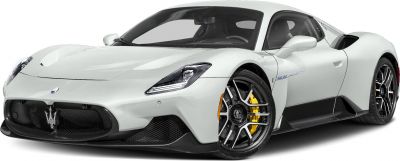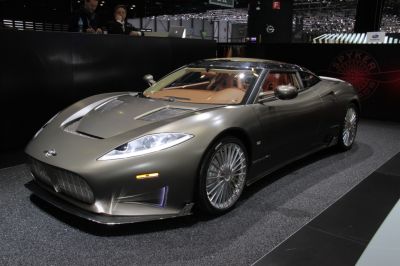 1993 McLaren F1 Dimensions, Size & Specs
1993 McLaren F1 Dimensions, Size & SpecsMeasurements of the 1993 McLaren F1, engineered for optimal performance and comfort
| Dimensions | |
|---|---|
| Length: | 4287-4928 mm168.8-194.0 in14.1-16.2 ft |
| Width: | 1820-1940 mm71.7-76.4 in6.0-6.4 ft |
| Height: | 1140-1200 mm44.9-47.2 in3.7-3.9 ft |
| Ground Clearance: | 120 mm4.7 in0.4 ft |
| Trunk Capacity: | 227 liter8.0 cu ft |
| Trunk Capacity (Max): | 283 liter10.0 cu ft |
| Weight Specifications | |
| Curb Weight: | 1120-1140 kg2469-2513 lbs |
| Tire Specifications | |
| Rims Sizes: | 17-inch rims:
|
| Tire Sizes: |
|
The McLaren F1, produced from 1992 to 2000, remains an iconic supercar celebrated for its innovative design and performance. As a two-door coupe, this generation boasts unique size dimensions that influenced automotive engineering during its era. The length of the McLaren F1 ranges from 4,287 mm (168.8 inches) up to 4,928 mm (194 inches), reflecting subtle variations depending on specific versions and modifications. Its width varies between 1,820 mm (71.7 inches) and 1,940 mm (76.4 inches), providing a broad stance for enhanced stability and aerodynamic efficiency. Standing low at heights between 1,140 mm (44.9 inches) and 1,200 mm (47.2 inches), the F1's sleek profile complements its high-speed capabilities.
The McLaren F1's lightweight construction contributes significantly to its agility, with a curb weight ranging narrowly from 1,120 kg (2,470 lbs) to 1,140 kg (2,513 lbs). This relatively low weight for a supercar optimizes acceleration and handling dynamics. The car features a luggage capacity of 227 liters (8 cubic feet), which can be expanded to 283 liters (10 cubic feet) with the rear seats folded down, an unusual practicality aspect for a high-performance sports vehicle.
Ground clearance is maintained at a low 120 mm (4.7 inches), emphasizing the sports car's focus on downforce and road-hugging capabilities, while the wheel and tire setup includes rims sized at 11.5J x 17 and 9J x 17, paired with tire options such as 315/45 R17 and 235/45 R17, ensuring excellent traction and cornering performance. These precise dimensions and engineering details underscore the McLaren F1's stature as a groundbreaking coupe that combined size, weight, and aerodynamic principles to achieve extraordinary speed and driving experience.
Discover the standout features that make the 1993 McLaren F1 a leader in its class
Have a question? Please check our knowledgebase first.
The McLaren F1, produced between 1992 and 2000, has a length ranging from 4287 mm to 4928 mm (168.8 to 194 inches), a width from 1820 mm to 1940 mm (71.7 to 76.4 inches), and a height of 1140 mm to 1200 mm (44.9 to 47.2 inches). These dimensions reflect the car's low-slung, aerodynamic design which emphasizes speed and performance. Variations in these measurements may be due to different configurations or minor design updates during its production run.
The McLaren F1's curb weight is remarkably light, ranging from 1120 kg to 1140 kg (2469 to 2513 lbs). This relatively low weight for a supercar of its era contributes significantly to its exceptional acceleration, handling, and overall performance. The lightweight construction was achieved through use of advanced materials such as carbon fiber and titanium, making the F1 one of the lightest and fastest production cars of the 1990s.
The McLaren F1 offers a luggage capacity of 227 liters (8 cubic feet) with the rear seats in place, which increases to 283 liters (10 cubic feet) when the rear seats are folded down. While not designed as a practical daily driver, this capacity is relatively generous for a supercar, allowing for some luggage or groceries. However, it is still limited compared to standard passenger cars, making the F1 best suited for enthusiasts prioritizing performance over cargo space.
The McLaren F1 features a low ride height with a ground clearance of approximately 120 mm (4.7 inches). This design choice improves aerodynamics and handling at high speeds but can pose challenges when driving over speed bumps, steep driveways, or rough roads. Owners must exercise caution in everyday driving scenarios to avoid damage to the undercarriage or front splitter.
The McLaren F1 uses rims sized 11.5J x 17 inches at the rear and 9J x 17 inches at the front, paired with tire sizes such as 315/45 R17 and 235/45 R17, including high-performance variants like 315/45 ZR17 and 235/45 ZR17. These wide, large-diameter rims and tires provide exceptional grip, stability, and cornering capabilities, essential for a car of the F1’s performance caliber, delivering both high-speed control and responsive handling.
With its length of up to 4928 mm (194 inches), width up to 1940 mm (76.4 inches), and low height ranging between 1140 mm and 1200 mm (44.9 to 47.2 inches), the McLaren F1 should fit into a standard residential garage. Typical garages measure approximately 2.4 to 3 meters (7.9 to 9.8 feet) wide and 5.0 to 6.0 meters (16.4 to 19.7 feet) deep, which accommodates the F1’s dimensions comfortably. However, the very low ride height requires careful entry and exit to avoid scraping, so owners need to be cautious.
The McLaren F1 did not have a direct predecessor as it was McLaren’s first road car. However, when compared to contemporary supercars from the early 1990s, such as the Ferrari F40 or Porsche 959, the F1 stood out for its innovative design, lighter weight, and superior dimensions that balanced aerodynamics with driver comfort. The F1’s length and width were similar or slightly larger, but it was notably lighter and featured a unique central driving position. Its performance was unmatched at the time, setting new benchmarks for top speed and handling.
The McLaren F1 is uniquely designed with a three-seat configuration, including a central driving seat flanked by two passenger seats which is uncommon among supercars. This layout provides better driver visibility and engagement while offering passenger space that is surprisingly roomy for such a high-performance vehicle. Compared to other supercars of the 1990s, which typically have two seats, the F1’s arrangement enhances comfort and usability without compromising its low, aerodynamic profile.
The McLaren F1 features a lightweight carbon fiber monocoque chassis, extensive use of titanium and magnesium, and a low-profile aerodynamic body. Its proportions are influenced by the need to maximize high-speed stability while minimizing drag. The car’s long wheelbase and low height enhance cornering and reduce lift, while the distinctive central driving position optimizes driver control. These elements contribute to the F1’s unique size and shape, balancing form and function for exceptional performance.
The McLaren F1 uses a staggered tire setup, with wider tires at the rear (315/45 R17) for traction and narrower tires at the front (235/45 R17) for steering precision. The large rim sizes (up to 17 inches) combined with high-performance tires provide a large contact patch with the road, improving grip and stability during aggressive acceleration, braking, and cornering. This setup enhances the F1’s balanced handling dynamics, allowing it to deliver precise, confident control even at very high speeds.
Discover similar sized cars.

| Production: | 2020-present |
|---|---|
| Model Year: | 2021 |
| Length: | 4669 mm183.8 in |
| Width: | 1965 mm77.4 in |
| Height: | 1221 mm48.1 in |

| Production: | 2024-present |
|---|---|
| Model Year: | 2025 |
| Length: | 4669 mm183.8 in |
| Width: | 2178 mm85.7 in |
| Height: | 1222 mm48.1 in |

| Production: | 2016-present |
|---|---|
| Model Year: | 2016 |
| Length: | 4628 mm182.2 in |
| Width: | 1953 mm76.9 in |
| Height: | 1202 mm47.3 in |

| Production: | 2025-present |
|---|---|
| Model Year: | 2026 |
| Length: | 4625 mm182.1 in |
| Width: | 1968 mm77.5 in |
| Height: | 1181 mm46.5 in |
